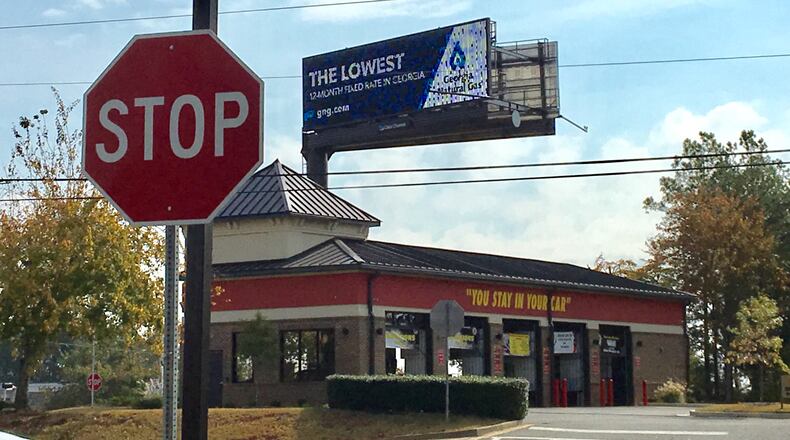Welcome to "Actual Factual," a regular column in which I, Becca Godwin, answer reader questions about goings-on in north Fulton. Here's one I did recently about what’s up with roundabouts in Johns Creek. Now that you're familiar, you'll find information for submitting your own questions at the bottom of this column. Cheers!
Reader John asks: The new Clear Channel billboards in Johns Creek are rumored to have cellphone metadata collection technology installed on them. Can you confirm this and tell us more about the program? Senator Schumer asked the FTC to investigate the program earlier this year.
Of note: John Bradberry runs Preserve Johns Creek, a group that opposes developments such as billboards and town homes.
Well, this is a complex one — especially since billboards have been a problem for Johns Creek since soon after its incorporation.
The quick answer is: no, the new billboards do not have cellphone metadata collection technology installed on them.
However, that doesn’t mean you’re going to love the further explanation of how the Clear Channel Outdoor program, Radar, works.
First, let’s break it down.
What do Johns Creek and Clear Channel say?
Clear Channel said it is not collecting cellular metadata using billboards.
Regarding Johns Creek specifically, Clear Channel spokesman Jason King said the billboards are not part of the Radar program — echoed on page 8 of this city document — but "in the future they will be."
Okay, so what is this Radar program about then?
Radar uses “third-party aggregated and anonymous data to match advertisers’ campaigns with groups of billboards that reach higher percentages (of) their target audience groups,” according to King.
The third-party data providers include AT&T Data Patterns, Placed and PlaceIQ.
A Feb. 2016 announcement described how Radar can "create a comprehensive map of how specific audience segments are most effectively and efficiently reached" by overlaying mobile consumer information.
Take Toms Shoes, for instance. The statement said Toms used Radar, and “by way of geo-fenced billboards and secure mobile location data,” Radar, through a third party, could provide “data that indicated if consumers were talking about the brand with friends, looking it up online or finding it in stores after exposure.”
Say what now?
OK, it essentially works like this. Sometimes when you download a “free” app, the exchange comes when you agree to the terms. You may be allowing your information to be collected in exchange for whatever benefit the app gives you (the Frequent Flyer app is one example, King said). The Radar partnership takes that information, and without identifying individuals, applies travel patterns for 700 different audience segments (think “soccer moms” or “NFL fans”) to the billboards.
In other words: the billboards aren’t tracking us — our cell phones are tracking us. And that compiled user data influences what ads may be on a digital billboard in a given area.
Yowzers. Did the Federal Trade Commission investigate?
The FTC declined to comment because all commission investigations are non-public, and it doesn’t confirm or deny existence of investigations.
Sen. Chuck Schumer of New York did ask it to investigate Radar, according to a May 2016 press release that included a copy of Schumer's letter to FTC Chairwoman Edith Ramirez.
The release, which dubbed them “spying billboards,” also “urged the FTC to allow consumers to opt-out of the billboard tracking program.”
But according to Clear Channel, since Radar only uses data providers that offer opt-out provisions, people are able to opt-out.
It is King’s understanding that since Schumer’s release, Clear Channel has satisfied any and all questions questions from federal agencies and elected leaders.
Schumer’s office did not respond to request for comment.
I, Becca Godwin, am a staff writer with the AJC and a lover of metro Atlanta. To submit “Actual Factual” questions, contact me at becca.godwin@ajc.com, @BeccaJGGodwin on Twitter or via the form below.
About the Author
Keep Reading
The Latest
Featured


